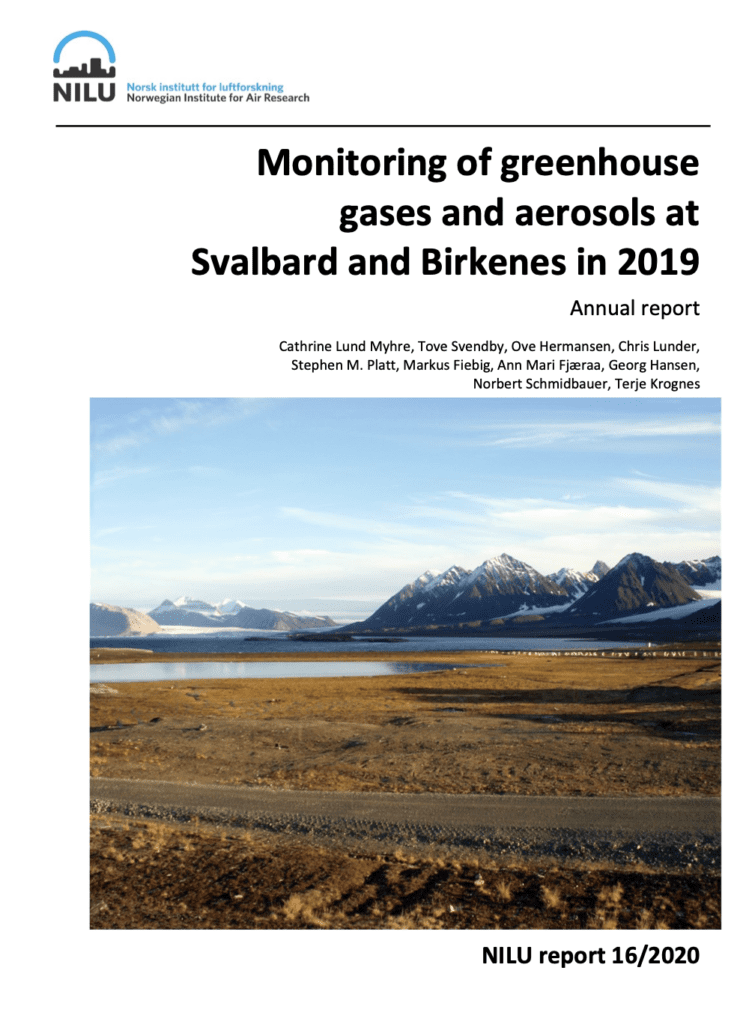Greenhouse gases and aerosols at Zeppelin at all-time high

A report published by the Norwegian Institute for Air Research (NILU) describes the activities and main results of the programme “Monitoring of greenhouse gases and aerosols at the Zeppelin Observatory, Svalbard, and Birkenes Observatory, Aust-Agder, Norway”.
The report comprises the measurements of 46 climate gases up to 31 December 2019; including the most important naturally occurring well-mixed greenhouse gases, synthetic greenhouse gases, reactive short lived gases as volatile organic compounds (VOCs), and CO in addition to various particle properties with high relevance to climate. Many of the gases also have strong ozone depleting effects.
The development and trends for the period 2001-2019 are reported, in addition to daily and annual mean observations. In 2015, the programme was extended to include 16 new climate gases, all with measurements analysed back to 2010. In 2016 the programme was further extended with six more species after modification of the instrumentation at the Zeppelin Observatory: three hydrofluorocarbons (HFCs), sulphuryl fluoride (SO2F2), halon H-2402 and nitrogen trifluoride (NF3).
The concentrations of all main greenhouse gases have been increasing since 2001, except for the ozone-depleting chlorofluorocarbons (CFCs) and a few halogenated gases regulated through the successful Montreal Protocol.
The observations from 2019 show new record high levels for most climate gases measured. The annual average CO2 concentration in 2019 was 411.9 ppm at Zeppelin and 416.1 ppm at Birkenes. The increases from 2018 are 2.6 ppm and 0.9 ppm, respectively.
Download the report from Miljodirektoratet.no
Read more on NILU.no (In Norwegian)
Did you find what you were looking for?